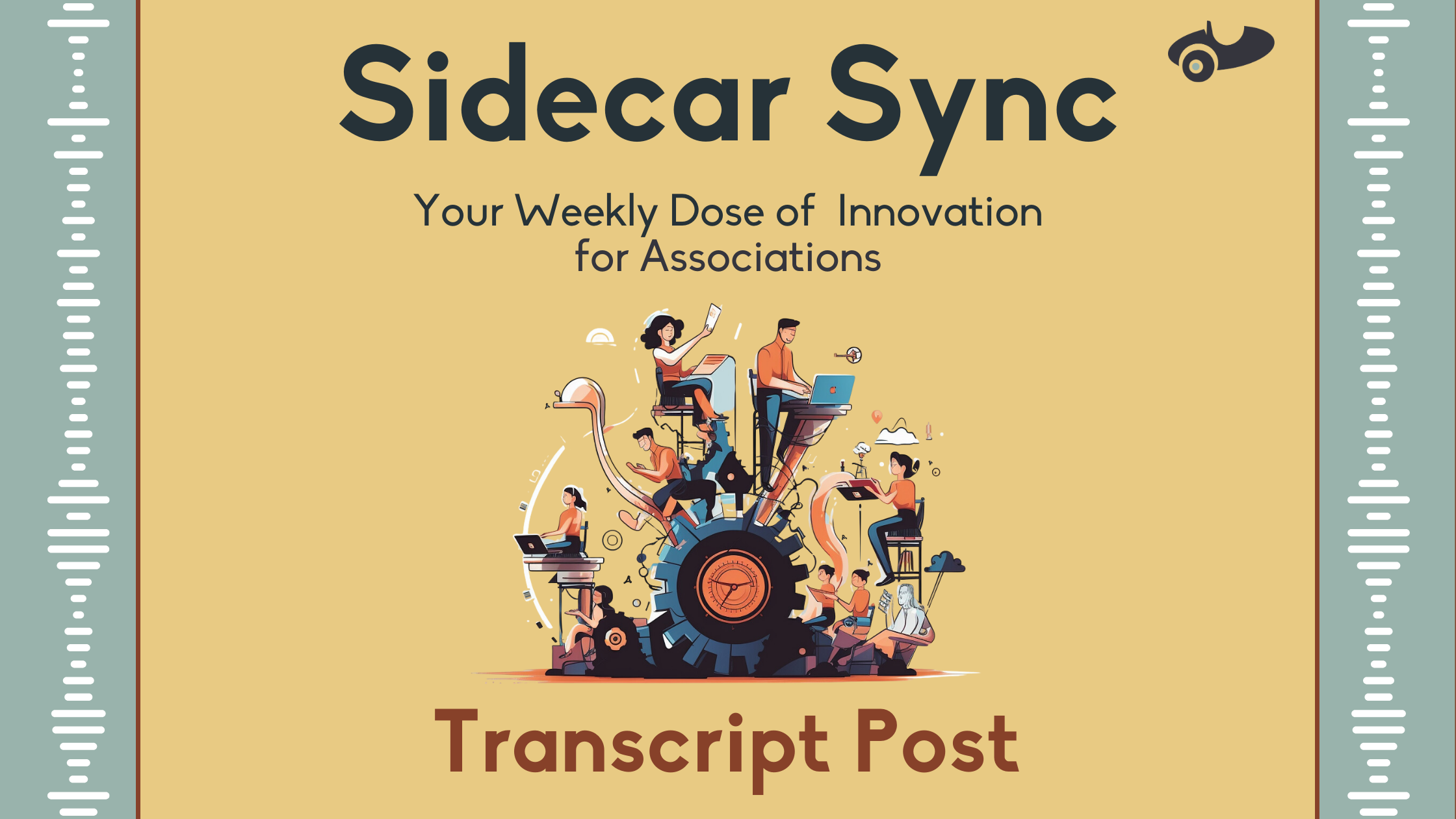The Surprising Yet Predictable Advances in AI
OpenAI's announcement regarding the addition of the Assistants API and Custom GPTs to its platform has taken some by surprise, yet this development is part of a larger, predictable trend in technology. Just as spam filters, once a separate add-on, became a standard feature of email services, artificial intelligence (AI) functionalities are being seamlessly integrated into broader platforms. Additionally, the AI platforms themselves are rapidly adding new capabilities that are of general use just as OpenAI did a few weeks ago. This pattern of innovation and integration is crucial for association leaders to understand, as it directly impacts how they select and utilize software.
Historical Patterns as a Guide for Future Selection
The transition of features from specialized offerings to standard inclusions in software mirrors a recurring theme in technological evolution. For association leaders, this emphasizes the importance of looking at software not just as a static tool but as an evolving solution. I used to give a talk to association leaders where I argued that the three most important features in any software tool were:
#1 – Flexibility
#2 – Flexibility
#3 – Flexibility
I first started giving this talk in the late 1990s. Now, my “Top 3” might be understating the importance of other things to some degree, but the point is that flexibility was crucial back then for adapting business needs, and is even more so now.
The key is to anticipate future requirements, integrations, and advancements, especially in the context of AI, to make informed software selection decisions.
AI Integration: The New Normal in Software
The integration of advanced AI features into everyday software is rapidly becoming the norm. From AI-augmented meeting tools to sophisticated data analysis systems, software platforms are increasingly incorporating AI to enhance user experience and efficiency. Association leaders must consider this ongoing integration when selecting software, ensuring that their choices are not only relevant today but will remain so as AI capabilities continue to expand. Many of the tools that are being sold as stand-alone products will soon become table stakes in other more comprehensive software tools. For example, many users are taking advantage of 3rd party AI notetakers for video conferencing. As we’ve seen with Zoom’s recent inclusion of similar AI features as part of its base software license, this won’t last long. You don’t use a 3rd party tool for “Tracking Changes” in Microsoft Word, and haven’t for years, but once upon a time this was an expensive 3rd party tool. The only difference is in the AI world, software development is happening faster than ever, so you need to make sure you recognize this trend as you evaluate and select products.
Emphasizing Adaptability in Software Selection
In the rapidly evolving landscape of technology, particularly in the realm of AI, adaptability in software selection emerges as a crucial strategy for association leaders. The pace at which AI and machine learning are advancing is transforming the capabilities of software and consequently reshaping user expectations. For associations, which often grapple with a spectrum of evolving needs and challenges, selecting software that is not only effective for current demands but also capable of evolving over time is essential. This adaptability ensures that investments in technology remain relevant and valuable, even as the technological landscape shifts.
Often, I see people still evaluating software on the basis of a giant requirements matrix. I would ask people to consider – how many of those requirements have been the same for a decade or more? I would suggest that in my experience that vast majority are indeed things that haven’t changed much, if at all, in a generation. On a related note, many association leaders hire consultants to prepare and manage processes to run software selections for bigger projects (like AMS, LMS, FMS, etc). While the value of a 3rd party expert and the value of a structured process is very clear, the approach historically used with these massive and aging lists of requirements is not. I would argue that you’d be far better off evaluating about 10% of those requirements that are truly mission critical, and spending the rest of your time evaluating the flexibility of the product, its ability to integrate with other systems, most important of which is a CDP that allows you to truly own your associations data.
Anticipating future needs and trends is an integral part of this adaptive approach. Association leaders must possess a keen understanding of both their strategic goals and the trajectory of technological developments. Questions about how members' needs might evolve in the next few years or what technological advancements could influence their industry are vital considerations. The answers to these questions guide leaders in selecting software that serves not only as a solution for the present but also as a foundation for future growth and adaptation. As I recently said during my digitalNow keynote – members don’t care about your problems, they only care if you’re solving theirs. The point is, you have to anticipate what your audience will want in 12-24-36 months, not just what you want. If you do that, you’ll build the capability that will enable the functionality that folks will be clamoring for in the future, rather than what’s in the rearview mirror.
Evaluating software for long-term flexibility involves looking beyond immediate functionalities to consider aspects like integration capabilities, scalability, and the vendor’s commitment to continuous development. Software built on open standards, offering robust APIs, and demonstrating flexibility in integration and expansion, is more likely to accommodate future growth and changes.
Beyond the technical attributes of the software, fostering a culture of technological agility within the association is equally important. This culture involves educating the workforce about the significance of adaptability, promoting continuous learning, and establishing processes that allow for quick adaptation to technological changes. Such a culture ensures that associations can maximize their software investments and maintain agility in a dynamic technological environment.
The selection of software vendors plays a critical role in this strategy. It's crucial for association leaders to partner with vendors who are not just providers, but allies in innovation and adaptability. Ideal vendors are those who consistently update their products to reflect new technologies, engage with their user communities to understand evolving needs, and have a clear and forward-looking vision for their software.
Preparing for Continuous Evolution
The software landscape is not static, and association leaders must prepare for continuous evolution. This involves staying informed about technological trends, understanding the potential impact of AI advancements, and being ready to adapt software strategies accordingly. It's about building a software ecosystem that can grow and change as the association's needs and the technological landscape evolve.
For association leaders, the key to successful software selection in an AI-driven world lies in forward-thinking and adaptability. By learning from historical patterns, like the evolution of spam filters, and understanding the implications of recent developments across the board with AI, leaders can make strategic decisions that align with both current and future needs. Embracing change, anticipating future trends, and choosing adaptable software solutions are essential for navigating this dynamic and exciting technological era.
Amith Nagarajan
I am the Chairman of Blue Cypress, a family of purpose driven companies. All of our family member companies focus on helping associations, non-profits, and other purpose-driven organizations achieve long term sustainability. More at BlueCypress.io






